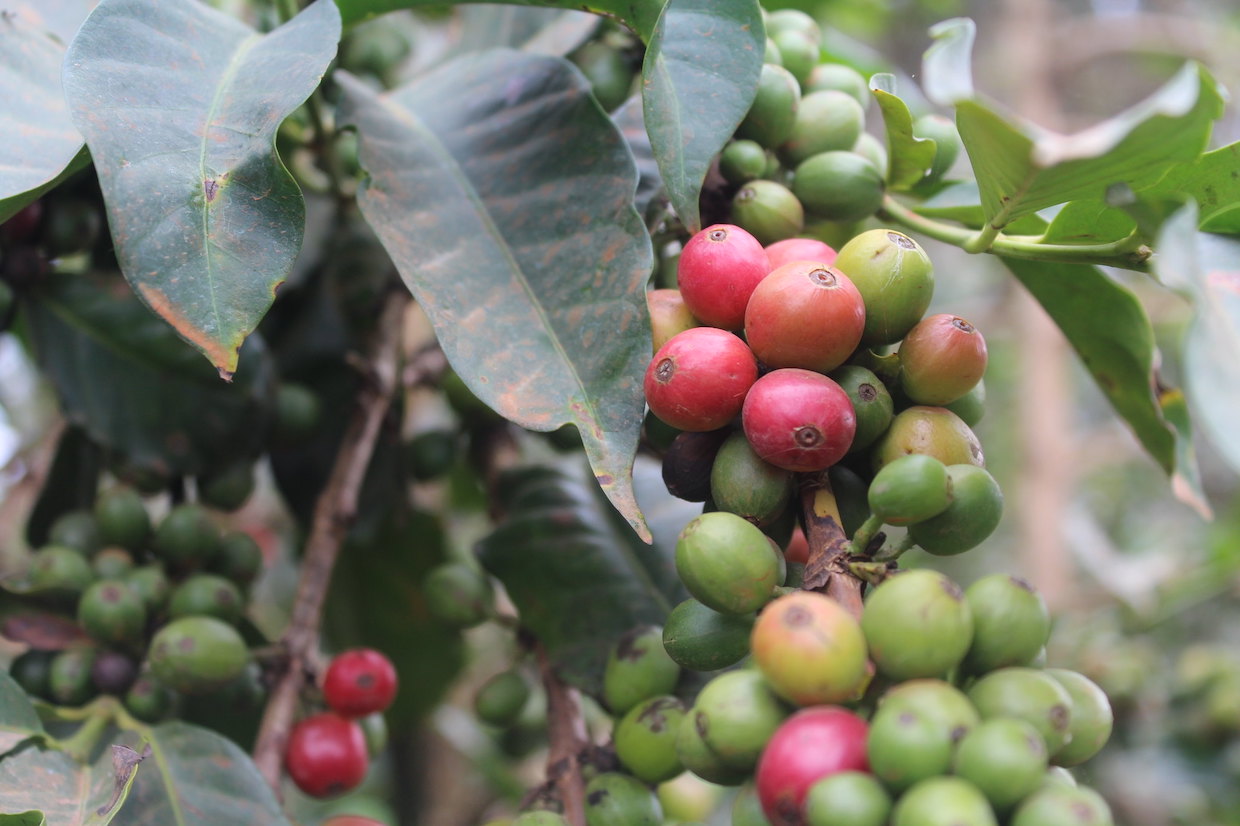
“Coffee Cherries” by Rachel Strohm is licensed under CC BY-ND 2.0.
Coffee production in Kenya is expected to decline by more than 6% in 2024/25 due to yield declines and loss of harvested area.
The projected decline is due to stagnation in harvested area, lower yields, lack of planting material and 2023 Kenyan government reforms that have overhauled marketing and licensing authorities while attempting to capture more value for farmers.
These and other predictions are outlined in the new USDA Foreign Agriculture Service annual report on the Kenya coffee sector.
[Note: This is part of a series of stories that will explore USDA FAS annual coffee reports. The information agency typically delivers more than a dozen country-level reports on the coffee sector, each coming from different authors and field offices, with predictions for the 2024/25 market year.]
Production
- The USDA FAS post predicts that Kenya’s coffee production will decrease by 6.3% to the equivalent of 750,000 60-kilo bags in market year 2024/25 due to stagnation in harvested area and lower yields.
- The report says that production has been hampered by Kenyan government reforms in 2023 that have “effectively terminated inputs, extension and certification support programs that were previously provided by the de-licensed marketing agents.”
- Responses to new regulations and market protocols have also led to “unprecedented milling delays due to logistical challenges and congestion” at coffee processing mills, further hampering production, according to the report.
Marketing and Sales Channels
- Over 80% of Kenya’s coffee is marketed by an estimated 550 cooperatives, with the Nairobi Coffee Exchange (NCE) handling over 90% of sales through its spot market.
- The July 2023 government reforms transferred key regulatory and licensing functions, moving the licensing of coffee milling to county governments and giving an agency called Capital Markets Authority (CMA) oversight of brokers.
- The Agricultural Food Authority (AFA) retains regulatory oversight for coffee traders, exporters, and roasters, and a small percentage of sales come through direct contracts.
Sales and Prices
- Coffee sales volumes at the NCE significantly dropped following the July 2023 reforms, hitting a low of 3,038 50-kilogram bags in August 2023.
- Cumulative sales volumes for 2023/24 have been consistently lower than in 2022/23, due to problems with post-harvest handling and milling facility congestion, according to the analysis.
- Coffee prices at the NCE were 26.8% higher in March 2024 compared to the same period in 2023.
Exports
- The FAS post estimates that Kenya’s coffee exports will decrease to 720,000 bags in 2024/25, a drop of 30,000 bags from the previous year, due to less domestic supply.
- The United States remained the leading export destination for Kenyan coffee in MY 2022/23, followed by Germany, Sweden, South Korea and Belgium.
- Starting January 2025, Kenyan coffee exports to the European Union will need to comply with the new EU deforestation-free law (EUDR), prompting local producers to engage the government for necessary land mapping, according to the authors.
Comments? Questions? News to share? Contact DCN’s editors here.






Comment